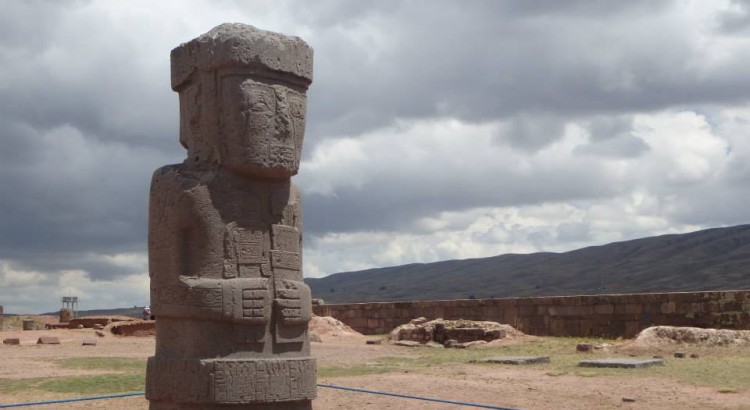Salar de Uyuni, or the Bolivian salt flats, is just one of the staggering sights we encountered during our 3 day trip through the deserts and mountains when entering Bolivia. Arguably one of the most beautiful sights of the trip, but undoubtedly the most iconic. (more…)
Bolivia

Bribery at the Bolivan Border
You might have heard rumours (or read about San Pedro Prison) regarding the various law enforcement officials in Bolivia and the scams and corrupt practices they employ to make a few extra Bolivianos. When leaving Chile from San Pedro de Atacama for the Bolivian border we had no idea that we were about to fall victim to one of these scams ourselves. (more…)

Tiwanaku – Ancient Inca Ruins Near La Paz
Tiwanaku is 72km from La Paz (takes about 1.5hrs drive) and is recognised by Andean scholars as one of the most important civilizations prior to the Inca Empire; it was the ritual and administrative capital of a major state power for approximately five hundred years.
Tiwanaku had a population of 100,000 people and is said to be the first home of the Incas. (more…)

The Day we Met an Inmate at San Pedro Prison (La Paz)
Anyone who has read the book Marching Powder will be only too familiar with San Pedro Prison in La Paz, but if you haven’t it’s difficult to believe the truth about San Pedro. (more…)

3 Days in La Paz, Bolivia
La Paz (The Peace) is the highest capital city in the World and has a population of around 835,000, living at an average height of 3660m above sea level. It is the political and commercial hub of Bolivia and many people think that La Paz is the capital, with its manic bustle and offbeat, cosmopolitan feel luring many more travellers than the official capital (Sucre). (more…)

Potosi – The Highest City In the World
At 4090m above sea level, Potosi is the highest city of it‘s size in the world. Founded in 1545 as a mining town, it soon produced fabulous wealth, becoming one of the largest cities in the Americas and the World, with a population exceeding 200,000 people. Between 2 and 8 million ‘miners’ (slaves) worked and perished in the mines throughout the three centuries of colonial rule, most of whom would live below ground for weeks or months at a time without coming-out for fresh air. We we keen to explore the city to see whether the gloom from this era still hangs over and how the locals live today. (more…)



